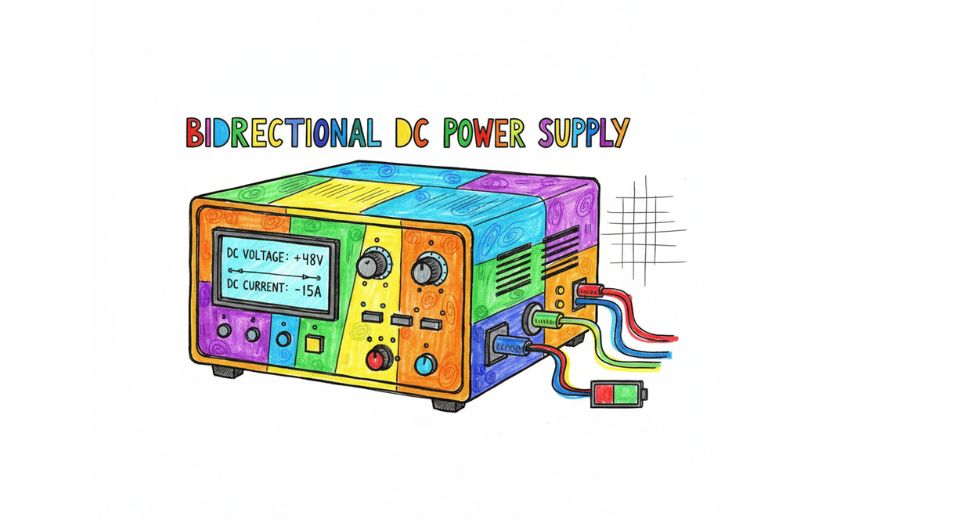
Oct 03, 2025

The global bidirectional dc power supply market by Metastat Insight is a representation of a change already in motion in the manner industries interact with energy, technology, and efficiency. From electric cars to renewable energy systems and industrial testing environments, power exchange is no longer unidirectional. Energy storage, recovery, and smart distribution are coming to the fore, rendering innovative supply systems more pertinent. This surge is not merely a technological change but an operational response to the way contemporary operations are energized, controlled, and optimized.
Market context
Sectors nowadays experience an urgent demand for solutions that can execute both charging and discharging without sacrificing performance. Legacy unidirectional systems constrain flexibility, wasting energy or mismanaging it. Increasing dependence on energy storage, electric transport, and connected devices imposes needs for dynamic systems that can handle two-way flows. In this context, bidirectional supply systems present themselves as a realistic solution tool, enabling businesses to make their operations more efficient, streamline testing processes, and prevent unnecessary wastage of energy. This shift highlights the increasing importance of the market in several sectors. How it works and why it's valuable Fundamentally, the technology exists as a power that can source and sink concurrently, developing a dynamic two-way flow. The structure benefits in uses where energy transfer is variable and continuous, including battery testing, renewable integration, and high-precision industrial applications.
Even beyond mere transfer, value exists in the ability to recover energy, since excess energy can be diverted and reused rather than be wasted. This leads to lower operational expenses and an enhanced energy profile with more sustainability. Further advantages are scalability, control in precision, and compatibility with automation platforms, further upping its real-world relevance on a broad range of use cases.
Growth story and technological evolution
The uptake of these systems did not take place overnight. Initial use was mainly restricted to specialized laboratories and specialty applications. With time, advances in design, efficiency, and electronic control expanded the application scope. Advances in semiconductor technology and power electronics were pivotal, allowing miniaturized designs with higher reliability.
Phased integration into industries such as automotive, aerospace, and renewable energy characterized the subsequent era, where performance requirements naturally corresponded with the technology's singular strengths. Now, the evolution is not just a reflection of technical improvements but also of a wider appreciation of the function of energy circulation in current operations.
Regional and worldwide tendencies
Adoption continues to have strong momentum where there are developed industrial bases with keen sustainability aspirations. North America and Europe have exhibited strong interest because they are keen on energy efficiency and electrification. At the same time, Asia-Pacific remains an emerging region of high promise, backed by industrialization at an explosive pace, increasing investments in electric mobility, and wide-ranging renewable projects. The world scenario captures the manner in which various geographies embrace the systems for diverse reasons—some for the sake of testing requirements in leading industries, others for the requirement of efficient and assured usage of energy in growing infrastructure.
Challenges and opportunities
The way ahead is not without its challenges. High upfront investment discourages smaller businesses, while technical sophistication increases requirements for specialized skill. Regulatory environments, especially regarding energy standards, bring uncertainties to play that impact the speed of adoption. Over these obstacles, however, opportunities persist.
Ongoing advances in digital monitoring and control technology create new opportunities for integration with smart grids and networked industries. Growth of renewable energy projects and the rapidly advancing drive towards electrification create a rich landscape where bidirectional supply systems are the natural fit. Synergies with automation and artificial intelligence platforms add further layers of value, providing industries with the opportunity to realize greater levels of operational intelligence.
Why it matters now
The opportunity for the global Bidirectional DC Power Supply market created by Metastat Insight reaches beyond technical horizons. Growing energy needs, greater focus on sustainable solutions, and the general shift to digital infrastructure make the embrace of efficient, adaptable power systems an urgent imperative. The ability to manage energy dynamically addresses directly larger challenges like climate action, economic efficiency, and industrial modernization. As businesses look for means to better utilize resources, these systems offer themselves not as discretionary enhancements but as critical pieces of next-generation infrastructure. Their capacity to blend sustainability and operational performance ensures an unmistakable place in determining tomorrow's energy future.
Drop us an email at:
Call us on:
+1 214 613 5758
+91 73850 57479